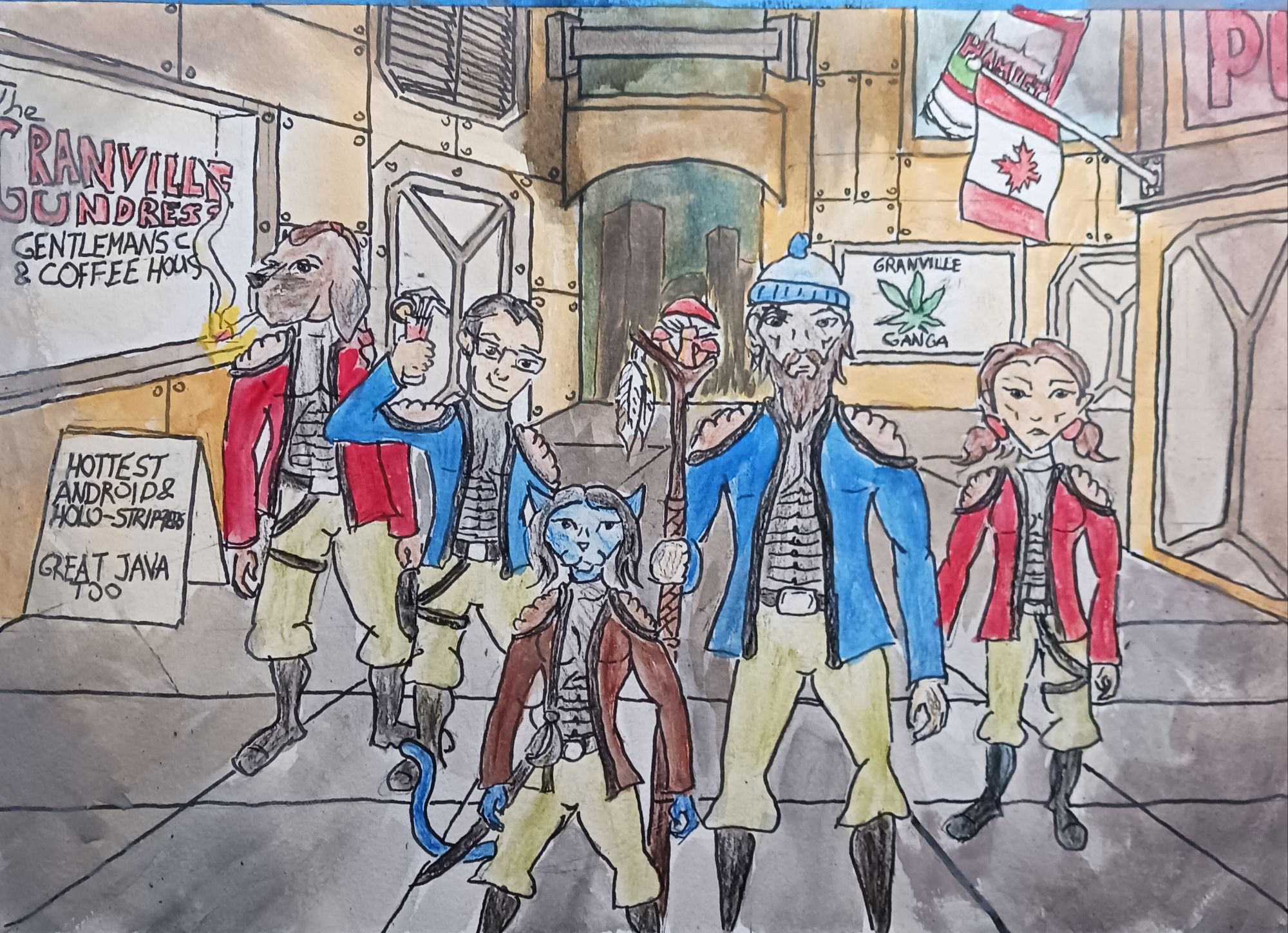System Name: Dease Lake System
Sector Overview A Sector, commonly referred to as a Provincial Sector, is a designated area of space within the broader and diverse cosmic region known as the Canadian Expanse. These Sectors function similarly to provinces, contributing to the organization and governance of this vast territory. Structure and Division The Canadian Expanse is divided into thirteen Provincial Sectors, each with its own... More: British Columbia Sector
Overview A Sector, commonly referred to as a Provincial Sector, is a designated area of space within the broader and diverse cosmic region known as the Canadian Expanse. These Sectors function similarly to provinces, contributing to the organization and governance of this vast territory. Structure and Division The Canadian Expanse is divided into thirteen Provincial Sectors, each with its own... More: British Columbia Sector
Number of Planets: 5
Notable Features: Rugged natural landscapes, rich history, and abundant wildlife
Primary Star(s): Dease Prime
Astrophysical Characteristics
Star Type(s): G-type main-sequence star (Yellow Dwarf)
Age of the System: 4.5 billion years
Habitability: One habitable planet (Dease Lake Prime)
Special Phenomena: Periodic auroras due to the planet’s magnetic field interactions
Planets and Major Bodies
Planet 1: Tahltan
Type: Rocky
Position in System: 1st planet
Description: A small, rocky planet with significant mineral deposits, especially precious metals.
Planet 2: Stikine
Type: Desert
Position in System: 2nd planet
Description: An arid planet with vast deserts, known for its dramatic landscapes and extreme temperatures.
Planet 3: Dease Lake Prime (Prime Planet)
Type: Terrestrial
Position in System: 3rd planet
Description: The primary habitable planet, known for its lush forests, pristine lakes, and diverse ecosystems.
Planet 4: Cassiar
Type: Gas Giant
Position in System: 4th planet
Description: A massive gas giant with vibrant cloud patterns and a prominent ring system.
Planet 5: Gnat Pass
Type: Ice Planet
Position in System: 5th planet
Description: A frozen world with icy plains and subterranean oceans, potentially harboring microbial life.
Historical and Cultural Significance
History: The Dease Lake System has a rich history of exploration and settlement, largely driven by its natural beauty and resources. Early settlers were attracted to its lush landscapes and abundant wildlife.
Cultural Importance: The system is known for its cultural diversity and connection to indigenous traditions, particularly the Tahltan and other native groups. Festivals celebrating these cultures are common.
Key Events: Establishment of the first settlements on Dease Lake Prime, the discovery of rich mineral deposits on Tahltan, and the annual Dease Lake Cultural Festival.
Inhabitants: The system is home to a mix of humans, scientists, environmentalists, and indigenous communities.
Current Status
Governance: The Dease Lake System is governed by a council that includes representatives from the local settlements and indigenous groups.
Economic Activities: Major economic activities include eco-tourism, scientific research, mining, and agriculture. The system’s natural beauty and resources make it a key player in these sectors.
Major Settlements: Major settlements include Dease City (the capital), Tahltan Town, and Stikine Valley.
Strategic Importance: The system’s rich resources and strategic location make it important for both economic and environmental reasons.
Notable Locations
Dease City
Description: The capital city of Dease Lake Prime, known for its vibrant culture, eco-friendly infrastructure, and educational institutions.
Tahltan Town
Description: A mining town on Tahltan, central to the system’s mining operations and known for its rugged frontier atmosphere.
Stikine Valley
Description: A settlement in the arid region of Stikine, famous for its dramatic landscapes and research facilities studying the planet’s unique geology.
Cassiar Station
Description: An orbital station around the gas giant Cassiar, serving as a hub for scientific research and space commerce.
Exploration and Research
Exploration History: The system was initially explored by early prospectors seeking mineral wealth, followed by settlers and researchers.
Ongoing Research: Current research focuses on sustainable mining practices, biodiversity in the pristine ecosystems of Dease Lake Prime, and the potential for life in the subsurface oceans of Gnat Pass.
Important Discoveries: Discoveries include valuable mineral deposits on Tahltan, unique plant and animal species on Dease Lake Prime, and microbial life forms in the icy depths of Gnat Pass.

